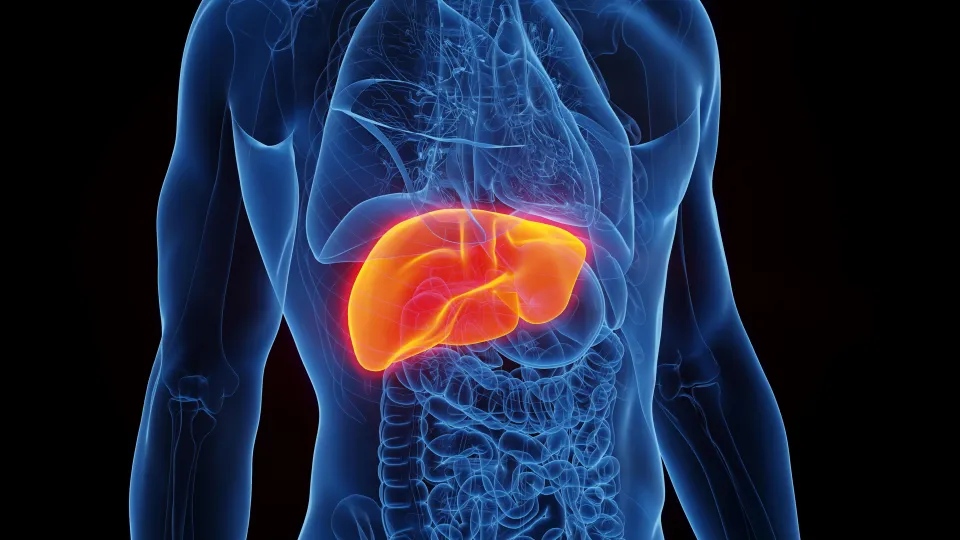
Carolina Eliscovich, Ph.D.
- Assistant Professor, Department of Medicine (Hepatology)
- Assistant Professor, Department of Developmental & Molecular Biology
Area of research
- We study the biology of spatially organized mRNAs in the liver. We develop microscopy technology using fluorescent-labeled probes to in situ visualize single molecules of mRNA within cells and tissue with high spatiotemporal resolution. , ,
Location
- Albert Einstein College of Medicine Jack and Pearl Resnick Campus 1300 Morris Park Avenue Ullmann Building 521 Bronx, NY 10461
Research Profiles
Professional Interests
Spatial organization of mRNAs in the liver.
Regulation of gene expression is critical to normal cellular function. Transcription stochastically transitions between ON and OFF states generating bursts of expression. This bursting phenomenon generates cell-to-cell variability or ‘noise’. However, how gene expression is regulated in intact tissue has not been explored. In the lab, we are interested in studying the cell biology of spatially organized RNAs in the liver tissue. We use single-molecule Fluorescence in situ Hybridization (smFISH) method that preserves the in vivo characteristics of the cells within the tissue. This high-resolution imaging technology allows us to find novel aspects of the transcription mechanism(s) and spatial organization of mRNAs within the liver.
The liver is composed of repeating anatomical structures, the liver lobules. These lobules are polarized due to blood flow. As a result, hepatocytes, the dominant cell type in the tissue, sense unique microenvironments with varying levels of oxygen, nutrients, hormones, and other factors depending on their exact location within the lobule. As an evolutionary adaptation, hepatocyte function is linked to liver architecture, a phenomenon termed “zonation.”
The liver is unique in its incredible capacity to regenerate from injury. Although hepatocytes turn over slowly, the liver displays the ability to recover its original mass within 7-10 days after surgical resection of as much as 70% in experimental animal models such as mice and rats. A similar process of regeneration is seen in humans. However, although this process of regeneration has been studied for many years, the fundamental mechanisms by which regeneration is initiated and later terminated remain unknown. Our understanding of the molecular and cellular processes controlling cell state changes in the liver during health and disease is far from complete. Our goal is to explore gene expression programs that drive mouse liver zonation and regeneration after partial hepatectomy; and elucidate failures of these pathways in liver pathologies.
Liver zonation controls metabolic events along the porto-central axis of the liver lobule. We also study heterogeneity in gene expression of metabolic genes during the feeding to fasting transition in mice. Our goal is to determine the individual cells and molecular events that are dysregulated in metabolic liver diseases such as diabetes.
The Eliscovich Lab is part of the Marion Bessin Liver Center, the ES-Diabetes Research Center, the Gruss Lipper Biophotonics Center, and the Program in RNA Biology at Einstein.
Selected Publications
Dong S, Aguirre-Hernandez C, Scrivo A, Eliscovich C, Arias E, Bravo-Cordero JJ, Cuervo AM. Monitoring spatiotemporal changes in chaperone-mediated autophagy in vivo. Nat Commun 2020 Jan 31;11(1):645. PMID: 32005807; PMCID: PMC6994528.
Biswas J, Nunez L, Das S, Yoon YJ, Eliscovich C, Singer RH. Zipcode Binding Protein 1 (ZBP1; IGF2BP1): A Model for Sequence-Specific RNA Regulation. Cold Spring Harb Symp Quant Biol 2020 Feb 21:039396. Online ahead of print. PMID: 32086331.
Biswas J, Patel VL, Bhaskar V, Chao JA, Singer RH*, Eliscovich C*. The structural basis for RNA selectivity by the IMP family of RNA-binding proteins. Nat Commun 2019 Sep 30;10(1):4440. PMID: 31570709; PMCID: PMC6768852. *corresponding author
Eliscovich C, Shenoy SM, Singer RH. Imaging mRNA and protein interactions within neurons. Proc Natl Acad Sci USA 2017; 114(10):E1875-E1884. PMID: 28223507 PMCID: PMC5347572.
Eliscovich C, Singer RH. RNP transport in cell biology: the long and winding road. Curr Opin Cell Biol 2017; 45:38-46. PMID: 28258033 PMCID: PMC5482755.
Wu B, Eliscovich C, Yoon YJ, Singer RH. Translation dynamics of single mRNAs in live cells and neurons. Science 2016; 352(6292):1430-5. PMID: 27313041 PMCID: PMC4939616.
Eliscovich C, Buxbaum AR, Katz ZB, Singer RH. mRNA on the move: the road to its biological destiny. J Biol Chem 2013; 288(28):20361-8. PMID: 23720759 PMCID: PMC3711302.
Bava FA, Eliscovich C, Ferreira PG, Miñana B, Ben-Dov C, Guigó R, Valcárcel J, Méndez R. CPEB1 coordinates alternative 3'-UTR formation with translational regulation. Nature 2013; 495(7439):121-5. PMID: 23434754.
Ortiz-Zapater E, Pineda D, Martínez-Bosch N, Fernández-Miranda G, Iglesias M, Alameda F, Moreno M, Eliscovich C, Eyras E, Real FX, Méndez R, Navarro P. Key contribution of CPEB4-mediated translational control to cancer progression. Nat Med 2011; 18(1):83-90. PMID: 22138752.
Novoa I, Eliscovich C, Belloc E, Mendez R. Oogenesis: The Universal Process. Verlhac M, Villeneuve A, editors. UK: Wiley-Blackwell, A John Wiley & Sons, Ltd.; 2010. Chapter 8, Oocyte-Specific Translational Control Mechanisms; p.199-226.
Eliscovich C, Peset I, Vernos I, Méndez R. Spindle-localized CPE-mediated translation controls meiotic chromosome segregation. Nat Cell Biol 2008; 10(7):858-65. PMID: 18536713.






